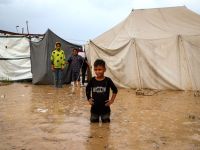- Hawaii sent its residents an alert that a nuke was headed their way
- Although fake, the fear it caused is real
- Rather than giving into such fear, the U.S. should use it
- The U.S. can harness its own fear to negotiate a diplomatic end to the Korean conflict
Early on Saturday morning, Hawaii residents were greeted with an urgent message essentially telling them that a missile was headed their way and that this was not a drill. It went without saying that North Korea had successfully launched a nuclear weapon aimed at Hawaii and was now looking to engulf the scenic island in flames.
For about an hour, Hawaii residents had no other recourse than to assume they were going to be evaporated in a mushroom cloud.
The alert was a false alarm, but residents panicked. After it became clear there was no missile, the alert went viral and the world looked on with a nervous smile. From the alert, and the countless articles speculating on the reach of North Korea’s nuclear arsenal, it is clear that U.S. residents are living in real fear of North Korea.
But rather than let that fear simmer and morph into a violent and frenzied demand to strike North Korea and dissipate the fear, this could be a sober lesson in understanding the perspective of the North Koreans. If the U.S. is able to use their own fear to understand North Korea’s, a diplomatic end may be more likely.
No other piece of writing captures the core of the U.S.’ fear than Edward Luttwak’s recent call in Foreign Policy to ignore the potential loss of millions of South Koreans and strike all North Korean nuclear targets.
Luttwak, a Cold War-era analyst, seems to believe a clean attack on North Korea is possible.
Pointing to the myriad examples of North Korean nuclear testing, Luttwak says these were the times to strike: “Each test would have been an excellent occasion for the United States to finally decide to do to North Korea what Israel did to Iraq in 1981, and to Syria in 2007 — namely, use well-aimed conventional weapons to deny nuclear weapons to regimes that shouldn’t have firearms, let alone weapons of mass destruction.”
Here, Luttwack references the 1981 Operation Opera where Israeli forces struck one reactor in Iraq, and the 2007 Operation Orchard where again, Israeli forces struck a singular nuclear reaction in Syria. These examples are disastrously misleading in trying to understand what even a modest strike on North Korea would look like. By Luttwak’s own calculation, North Korea has about three dozen of such sites, meaning an operation roughly 36 times the size of Israel’s strikes.
Nevermind the fact that any North Korean military response would necessitate the escalation to all-out war in a matter of minutes.
Worried about the deaths of tens of millions of South Koreans? Luttwak isn’t. South Korea’s capital city, Seoul, and its surrounding areas has a population of roughly 25 million people and is one of the most economically powerful cities in the world. Oh, and it’s a few miles from the North Korean border, where thousands of artillery batteries are waiting to shell the city into oblivion.
Even the most conservative estimates put the initial loss of life in the first few days of any military conflict between North and South Korea in the millions. To this end, Luttwak simply blames South Korea for not preparing well enough for this possibility, and trudges ahead in goading U.S. leaders into the potential destruction of an entire peninsula.
Instead of giving in to this fear, the U.S. can harness it productively in understanding the situation more fully.
Now that the U.S. is genuinely beginning to fear a North Korean nuclear attack, it has a tiny glimpse into the perspective of North Korea, which has had thousands of U.S. nuclear weapons pointed at it for its entire existence and has lived under the possibility of being invaded and occupied.
The rationale to acquire nuclear weapons is undoubtedly the ability to defend oneself or give the perception that any attack on the country would be met with a counterforce so strong that it makes no sense to ever initiate a conflict. This logic is what constitutes the idea of mutually assured destruction.
It is safe to assume North Korea is working hard to acquire nuclear capabilities for this reason and not a bloodthirsty desire to cause as much widespread damage as possible before going out in a blaze of internationally ordered nuclear strikes, as warmongers would have us think.
If both North Korea and the U.S. are scared of each other, that is a perfect place to begin genuine efforts to de-escalate the conflict and work towards a diplomatic end to the protracted Korean peninsula crisis.
Now that both sides are coming to understand just how horrific a military strategy would be, it may be possible for each country to imagine that there is no actual way out of this quagmire without diplomacy.







